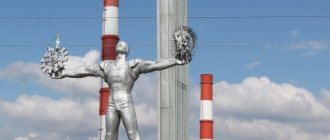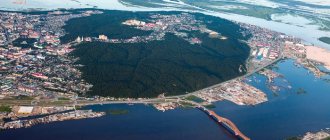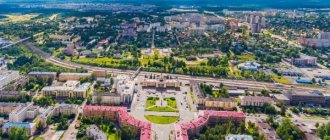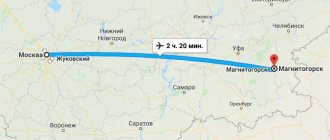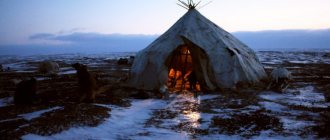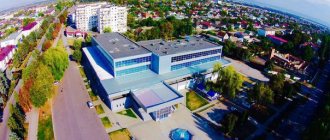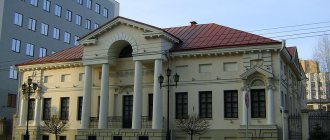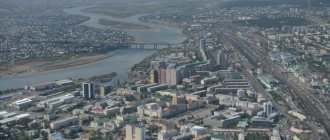There is an amazing place in our country - Chukotka. Bilibino is a city located in this area with a continental climate. This area is characterized by cold winters, up to -40, and warm summers, up to +25. Living beyond the Arctic Circle is difficult, but it turns out it is possible. And in Soviet times it was even prestigious. People were attracted to Chukotka. Bilibino is a city where people came to make money; houses and cultural institutions were built here. How does the city live nowadays? We'll tell you in this article.
Where is Bilibino?
Bilibino on the map of Russia is located in the western part of the Chukotka Autonomous Okrug . The small town stands at the confluence of the Karalveem River with the Kolyma tributary, the Bolshaya Keperveem River.
The city is located at the spurs of the Anadyr Plateau and the Anyui Range. The height of its center above sea level is about 240 m. The geographical coordinates of Bilibino are 68°3′ in latitude and 166°27′ in longitude.
Bilibino is separated from the capital of the Autonomous Okrug, Anadyr, by a distance of 653 km. The nearest relatively large city and port of Pevek is located on the shores of the East Siberian Sea, 240 km away. The time difference with Moscow is +9 hours.
What can you visit?
You can get to the Nuclear Power Plant on a guided tour if you sign up for it in advance. Those who want to inspect what is inside must wear special slippers, and when entering the room with a nuclear reactor, take off their shoes altogether. Everything looks pretty clean and tidy inside. Everything works and is in its place.
It is noteworthy that icons can be seen on some devices. Of course, it is desirable that God protect the city of Bilibino (Chukotka) from dangerous incidents, and especially from the explosion of a power plant.
How to get there?
The only way to quickly get to the remote town of Bilibino is by plane. The flight from Magadan to Keperveem Airport lasts 3 hours. The ticket price, depending on the flight, varies greatly: from 10 to 20 thousand rubles.
From Keperveem, Chukotavia airline operates regular flights to the cities of Pevek and Anadyr. As necessary, the airlines Gazpromavia, IrAero, and Yakutia organize charter flights from Moscow, Irkutsk and Yakutsk.
Wealthy tourists have the opportunity to charter a helicopter for a trip to Bilibino. The cost of a flight hour at Bilibinoavia is 170-180 thousand rubles. The services of Chukotavia pilots cost another 10-15% more.
Bilibino on the map of Russia is located along a dirt road at a distance of 32 km from the airport. The airport is connected to the city by regular bus service. In winter, a car can drive from Magadan to Bilibino on a winter road. The length of the seasonal road is 2.5 thousand km.
Combined with the harsh weather conditions of the Chukotka winter, this route is not suitable for unprepared drivers and travelers.
End of story
This prosperity ended in 1997, when the plant ceased operations. Chukotka has also lost its attractiveness for those who want to earn extra money. Bilibino has lost its virtues in the form of jobs and wages, and even payments to workers have ceased. Residents of the city, especially young people, began to leave in search of a better life. As a result, the population decreased by almost 10 thousand from the previous 16 thousand.
Now the mining and processing plant does not exist, both legally and physically. All that was left of the rich enterprise were ruins.
The remaining residents work at the nuclear power plant, at the Karalveem gold mine, in shops, in public institutions remaining in the city, and in a taxi service.
There are almost no personal cars here. And it’s hard to imagine how they are delivered to Bilibino (Chukotka). How to get there? By air. The nearest airfields are in Magadan and Anadyr. You can fly from them to Keperveem in three hours. And from there to Bilibino it remains only 40 kilometers to travel by car.
There is also a winter road that runs along the route Magadan - Zyryanka - Bilibino and has a length of 2500 kilometers. It is interesting that some romantics come here in search of adventure, despite the difficult journey and the cost of the flight, which is about 20,000 rubles.
General data and historical facts
The first Russian settlers came to Western Chukotka in the middle of the 17th century. after the expedition of S. Dezhnev in 1648. For decades, the winter route along the Maly Anyui valley connected the Anadyr fort with Yakutsk. In the 19th century Scientists from F.F.’s expeditions made a great contribution to the study of the region’s territory. Matyushkina, G.L. Maydelya, F.P. Wrangel.
In 1778, a peace treaty was concluded with the Chukchi. Just 10 years later, from 1788, regular fairs began to be held on the Bolshoi Anyui River. In the 20th century During the Soviet period of history, many geological expeditions worked on the territory of Western Chukotka.
In the spring of 1955, the geological exploration team N.V. Makovsky discovered a large deposit of alluvial gold on the banks of the Karalvaam River.
The history of the city of Bilibino begins precisely from this moment, followed by further events:
- By the late autumn of 1955, the first wooden houses on Seychanskaya Street were built on the site of the tent camp on the river. Construction of the runway has begun.
- In February 1956, at a meeting of geologists, it was decided to name the new settlement Bilibino in honor of the geologist Yu.A. Bilibina.
- In 1958, Bilibino was given the status of a workers' village. At the mine named after Yu.A. Bilibin, the first gold was mined.
- In the summer of 1961, the settlement of geologists became the regional center of the Bilibinsky district.
- In 1974, construction of a nuclear power plant was completed 4 km from Bilibino.
- In 1993, Bilibino was given city status.
- In 2010, the village of Keperveem, located 32 km from the city, came under the jurisdiction of the Bilibino municipality.
An excerpt characterizing Bilibino
- Who do you want, sir? - said a voice from the darkness. Petya answered that the boy was French, who was taken today. - A! Spring? - said the Cossack. His name Vincent has already been changed: the Cossacks - into Vesenny, and the men and soldiers - into Visenya. In both adaptations, this reminder of spring coincided with the idea of a young boy. “He was warming himself by the fire there.” Hey Visenya! Visenya! Spring! – voices and laughter were heard in the darkness. “And the boy is smart,” said the hussar standing next to Petya. “We fed him just now.” Passion was hungry! Footsteps were heard in the darkness and, bare feet splashing in the mud, the drummer approached the door. – Ah, c'est vous! - said Petya. – Voulez vous manger? “N’ayez pas peur, on ne vous fera pas de mal,” he added, timidly and affectionately touching his hand. - Entrez, entrez. [Oh, it's you! Are you hungry? Don't be afraid, they won't do anything to you. Come in, come in.] - Merci, monsieur, [Thank you, sir.] - answered the drummer in a trembling, almost childish voice and began to wipe his dirty feet on the threshold. Petya wanted to say a lot to the drummer, but he didn’t dare. He stood next to him in the hallway, shifting. Then in the darkness I took his hand and shook it. “Entrez, entrez,” he repeated only in a gentle whisper. “Oh, what should I do to him!” - Petya said to himself and, opening the door, let the boy pass by. When the drummer entered the hut, Petya sat away from him, considering it humiliating for himself to pay attention to him. He just felt the money in his pocket and was in doubt whether it would be a shame to give it to the drummer. From the drummer, who, on Denisov’s orders, was given vodka, mutton and whom Denisov ordered to dress in a Russian caftan, so that, without sending him away with the prisoners, he would be left with the party, Petya’s attention was diverted by the arrival of Dolokhov. Petya in the army heard many stories about the extraordinary courage and cruelty of Dolokhov with the French, and therefore, from the moment Dolokhov entered the hut, Petya, without taking his eyes off, looked at him and became more and more encouraged, twitching his head raised, so as not to be unworthy even of such a society as Dolokhov. Dolokhov’s appearance strangely struck Petya with its simplicity. Denisov dressed in a checkmen, wore a beard and on his chest the image of St. Nicholas the Wonderworker, and in his manner of speaking, in all his manners, he showed the peculiarity of his position. Dolokhov, on the contrary, previously, in Moscow, who wore a Persian suit, now had the appearance of the most prim Guards officer. His face was clean-shaven, he was dressed in a guards cotton frock coat with George in the buttonhole and a simple cap straight on. He took off his wet cloak in the corner and, going up to Denisov, without greeting anyone, immediately began asking about the matter. Denisov told him about the plans that large detachments had for their transport, and about sending Petya, and about how he responded to both generals. Then Denisov told everything he knew about the position of the French detachment. “That’s true, but you need to know what and how many troops,” said Dolokhov, “you will need to go.” Without knowing exactly how many there are, you cannot start the business. I like to do things carefully. Now, would any of the gentlemen want to go with me to their camp? I have my uniforms with me. - I, I... I will go with you! – Petya screamed. “You don’t need to go at all,” Denisov said, turning to Dolokhov, “and I won’t let him in for anything.” - That's great! - Petya cried out, - why shouldn’t I go?.. - Yes, because there is no need. “Well, excuse me, because... because... I’ll go, that’s all.” Will you take me? – he turned to Dolokhov. “Why…” answered Dolokhov absentmindedly, peering into the face of the French drummer. - How long have you had this young man? – he asked Denisov. - Today they took him, but he doesn’t know anything. I left it for myself. - Well, where are you putting the rest? - said Dolokhov. - How to where? I'm sending you under the guard! – Denisov suddenly blushed and cried out. “And I can boldly say that there is not a single person on my conscience.” Is it really right for you to send away a person under escort in a city, what to do, I will tell you, the honor of a soldier. “It’s decent for a young count of sixteen to say these pleasantries,” Dolokhov said with a cold grin, “but it’s time for you to leave it.” “Well, I’m not saying anything, I’m just saying that I will definitely go with you,” Petya said timidly. “And it’s time for you and me, brother, to give up these pleasantries,” Dolokhov continued, as if he found special pleasure in talking about this subject that irritated Denisov. - Well, why did you take this to you? - he said, shaking his head. - Then why do you feel sorry for him? After all, we know these receipts of yours. You send them a hundred people, and thirty will come. They will starve or be beaten. So is it all the same not to take them? Esaul, narrowing his bright eyes, nodded his head approvingly. - This is all shit, there’s nothing to discuss here. I don’t want to take it on my soul. You talk - pomg'ut. Well, hog'osho. Just not from me. Dolokhov laughed. “Who didn’t tell them to catch me twenty times?” But they will catch me and you, with your chivalry, anyway. – He paused. - However, we have to do something. Send my Cossack with a pack! I have two French uniforms. Well, are you coming with me? – he asked Petya. - I? Yes, yes, absolutely,” Petya cried, blushing almost to tears, looking at Denisov. Again, while Dolokhov was arguing with Denisov about what should be done with the prisoners, Petya felt awkward and hasty; but again I did not have time to fully understand what they were talking about. “If big, famous people think so, then it must be so, therefore it’s good,” he thought. “And most importantly, Denisov must not dare to think that I will obey him, that he can command me.” I will definitely go with Dolokhov to the French camp. He can do it and so can I.” To all of Denisov’s urgings not to travel, Petya replied that he, too, was used to doing everything carefully, and not Lazar’s at random, and that he never thought about danger to himself. “Because,” you yourself must agree, “if you don’t know correctly how many there are, the lives of maybe hundreds depend on it, but here we are alone, and then I really want this, and I will definitely, definitely go, you won’t stop me.” “, he said, “it will only get worse... Dressed in French greatcoats and shakos, Petya and Dolokhov drove to the clearing from which Denisov looked at the camp, and, leaving the forest in complete darkness, descended into the ravine. Having driven down, Dolokhov ordered the Cossacks accompanying him to wait here and rode at a fast trot along the road to the bridge. Petya, transfixed with excitement, rode next to him. “If we get caught, I won’t give up alive, I have a gun,” Petya whispered. “Don’t speak Russian,” Dolokhov said in a quick whisper, and at that same moment a cry was heard in the darkness: “Qui vive?” [Who's coming?] and the ringing of a gun. Blood rushed to Petya's face, and he grabbed the pistol. “Lanciers du sixieme, [Lancers of the sixth regiment.],” said Dolokhov, without shortening or increasing the horse’s stride. The black figure of a sentry stood on the bridge. – Mot d'ordre? [Feedback?] – Dolokhov held his horse and rode at a walk. – Dites donc, le colonel Gerard est ici? [Tell me, is Colonel Gerard here?] - he said. – Mot d'ordre! - Without answering, the sentry said, blocking the road. “Quand un officier fait sa ronde, les sentinelles ne demandent pas le mot d'ordre...” Dolokhov shouted, suddenly flushing, running his horse into the sentry. – Je vous demande si le colonel est ici? [When the officer goes around the chain, the sentries do not ask for feedback... I ask, is the colonel here?] And, without waiting for an answer from the guard who stood aside, Dolokhov walked up the hill at a walk. Noticing the black shadow of a man crossing the road, Dolokhov stopped this man and asked where the commander and officers were? This man, a soldier with a sack on his shoulder, stopped, came close to Dolokhov’s horse, touching it with his hand, and simply and friendlyly said that the commander and officers were higher on the mountain, on the right side, in the farm yard (that’s what he called the master’s estate). Having driven along the road, on both sides of which French conversation could be heard from the fires, Dolokhov turned into the courtyard of the manor’s house. Having passed through the gate, he dismounted from his horse and approached a large blazing fire, around which several people were sitting, talking loudly. Something was boiling in a pot on the edge, and a soldier in a cap and blue overcoat, kneeling, brightly illuminated by the fire, stirred it with a ramrod. “Oh, c'est un dur a cuire, [You can’t deal with this devil.]” said one of the officers sitting in the shadows on the opposite side of the fire. “Il les fera marcher les lapins... [He will get through them...],” said another with a laugh. Both fell silent, peering into the darkness at the sound of the steps of Dolokhov and Petya, approaching the fire with their horses. - Bonjour, messieurs! [Hello, gentlemen!] - Dolokhov said loudly and clearly. The officers stirred in the shadow of the fire, and one, a tall officer with a long neck, walked around the fire and approached Dolokhov. – C'est vous, Clement? - he said. – D'ou, diable... [Is that you, Clément? Where the hell...] - but he didn’t finish, having learned his mistake, and, frowning slightly, as if he were a stranger, he greeted Dolokhov, asking him how he could serve. Dolokhov said that he and a friend were catching up with their regiment, and asked, turning to everyone in general, if the officers knew anything about the sixth regiment. Nobody knew anything; and it seemed to Petya that the officers began to examine him and Dolokhov with hostility and suspicion. Everyone was silent for a few seconds. “Si vous comptez sur la soupe du soir, vous venez trop tard, [If you are counting on dinner, then you are late.],” said a voice from behind the fire with a restrained laugh. Dolokhov replied that they were full and that they needed to move on at night. He gave the horses to the soldier who was stirring the pot, and squatted down by the fire next to the long-necked officer. This officer, without taking his eyes off, looked at Dolokhov and asked him again: what regiment was he in? Dolokhov did not answer, as if he had not heard the question, and, lighting a short French pipe, which he took out of his pocket, asked the officers how safe the road was from the Cossacks ahead of them. “Les brigands sont partout, [These robbers are everywhere.],” answered the officer from behind the fire. Dolokhov said that the Cossacks were terrible only for such backward people as he and his comrade, but that the Cossacks probably did not dare to attack large detachments, he added questioningly. Nobody answered. “Well, now he’ll leave,” Petya thought every minute, standing in front of the fire and listening to his conversation. But Dolokhov again began the conversation that had stopped and directly began asking how many people they had in the battalion, how many battalions, how many prisoners. Asking about the Russian prisoners who were with their detachment, Dolokhov said: “La vilaine affaire de trainer ces cadavres apres soi.” Vaudrait mieux fusiller cette canaille, [It’s a bad thing to drag these corpses around with you. It would be better to shoot this bastard.] - and laughed loudly with such a strange laugh that Petya thought the French would now recognize the deception, and he involuntarily took a step away from the fire. No one responded to Dolokhov’s words and laughter, and the French officer, who was not visible (he was lying wrapped in an overcoat), stood up and whispered something to his comrade. Dolokhov stood up and called to the soldier with the horses.
Climate and ecology
Bilibino on the climate map of Russia is located within the Arctic zone, characterized by very low winter temperatures. The absolute minimum was recorded at -58°C. Summer is short, mostly cold, but on abnormally hot days the air temperature rises to 30°C and above.
The polar night at the latitude of the city begins in the first ten days of December and lasts until mid-January. The days when the sun does not set over Bilibino begin in May and end towards the end of July. The city is located in a permafrost zone. During the hot season, the soil thaws to a depth of several tens of centimeters.
Main climatic characteristics:
| month name | January | February | March | April | May | June | July | August | September | October | november | December |
| Average temperature, °C | -32 | -33 | -29 | -19 | -4 | 7 | 10 | 7 | 0 | -14 | -27 | -32 |
| Precipitation amount, mm | 10,0 | 9,2 | 22,3 | 6,5 | 10,6 | 56,1 | 70,4 | 79,5 | 26,3 | 25,0 | 33,7 | 13,6 |
| Days with fog | 0 | 0 | 0 | 0 | 0 | 0 | 1 | 2 | 1 | 0 | 0 | 0 |
| Average air humidity, % | 93 | 94 | 92 | 91 | 91 | 65 | 65 | 72 | 80 | 92 | 94 | 94 |
| Blizzard days | 25 | 19 | 14 | 10 | 7 | 1 | 0 | 0 | 9 | 20 | 18 | 21 |
| Number of sunny days | 4 | 6 | 7 | 10 | 10 | 11 | 8 | 10 | 7 | 4 | 4 | 4 |
| Average wind speed, m/s | 1,4 | 1,6 | 1,7 | 1,7 | 1,9 | 2,7 | 2,8 | 2,3 | 2,0 | 1,4 | 1,8 | 1,5 |
A major environmental threat to the city’s infrastructure is posed by global warming and the associated increased thawing of permafrost. As temperatures rise, methane and carbon dioxide are released from the upper layers of permafrost containing organic matter, which further enhances the greenhouse effect.
Thawing of permafrost also leads to the pushing of water to the surface, which provokes swamping of new areas. Cracks and failures formed during melting can destroy buildings and utilities. This is especially dangerous in the region where the operating nuclear power plant is located.
Total population
Over the past decades, the population of Bilibino has been steadily declining. The city has become one of the leaders in Russia in terms of population decline. If in 1989 15.5 thousand people lived in it, then in 2018 it decreased to 5.3 thousand inhabitants.
Only in 2022 was there a stabilization, and the following year there was a slight increase: by the end of 2022, the population of Bilibino amounted to 5.5 thousand people. Among them, the share of the male population is about 52%.
Able-bodied city residents are employed at the city's largest enterprises. These include the Rosenergoatom branch of the Bilibino Nuclear Power Plant, the Keperveem gold mine, the Polar Star, Luch, Siyanie and the Rosinka vegetable factory.
Ethnically, the city is dominated by residents of the Chukotka ethnic group, constituting 41% of the population. About 21% are representatives of other northern peoples: Evens, Koryaks, Itelmens, Lamuts. Russians and other non-indigenous nationalities make up approximately 38% of the population.
Demography
In typical post-Soviet development in the Russian Far East, the population of Bilibino decreased significantly after the collapse of the Soviet Union. At the time of the 1989 Soviet Census, the population of Bilibino was 15,558;[16] it fell to 6,181 in the 2002 Census[17] and further to 5,506 in the 2010 All-Russian Census.[4] As of January 2010, the ethnic composition of the city was mainly Russians (71%) and Ukrainians (15%); Chukchi and Evens accounted for 6% and 3% respectively; while all other nationalities account for less than 1% each.[ citation needed
]
Attractions
Bilibino Local Lore Museum named after. G.S. Glazyrina is the most significant landmark of the town. It was created as a public institution in 1972. The initiator of its opening was geologist Grigory Sergeevich Glazyrin, whose name is now given to the museum.
The exhibition is distinguished by the number of exhibits in the paleontological department, where the fauna of the Ice Age is presented. One of the main exhibits is a life-size replica of a baby mammoth. Among other departments, the ethnographic exhibition, sections on the natural resources of the region, and the history of its development are of great interest to visitors.
The city monument to participants in the Great Patriotic War of 1941-1945 has an unusual history. In the 1990s. a huge boulder weighing several tons with a hole in the middle was brought by geologists to the city center as a protest against the closure of the mines.
After the conflict was overcome, the stone remained on the street. In 2015, in the year of the 70th anniversary of the victory, the vylun was turned into a monument to the dead. An inscription appeared on its surface in memory of the fallen heroes, and the through hole was covered with a red star.
Another monument was erected on the street in honor of the founder of the city, geologist Yu.A. Bilibin, who was at the forefront of the development of gold mines in the region. It was opened in January 2004 in the city square.
The base for the bronze bust was a boulder weighing about 20 tons. A curious attraction of Bilibino is the observation deck on the Orbita hill. From the height of its slope you can see the entire town surrounded by mountain spurs.
Transport
Public transport on the streets of Bilibino runs along two bus routes. One of them connects the city center with the village of Keperveem, where the nearest airport is located. Buses on the second route connect several microdistricts of the town. For passenger transportation, MAZ-103 and LAZ-695N buses are used.
The city is connected to the nearest villages by a network of unpaved roads. The most important of them is the dirt and pebble route along which the main supply of the city is carried out from the port of Cape Verde on the Kolyma River.
The nearest airport with a dirt runway in the village of Kerpeevem was built in 1970. From this year it could receive An-2, Il-14 aircraft, from 1972 the Yak-40, An-24 began to land here, and a year later helicopters Mi-8.
Kerpeevem Airport, Bilibino, Chukotka
The infrastructure and airport building were built by 1975. In 2008, the entire airfield complex was modernized. After reconstruction, the airport began to accept modern medium-haul aircraft.
Housing
The only Severyanka hotel in the city is located 800 m from the center on Oktyabrskaya Street. At the same time, it can accommodate 48 guests in 24 rooms of standard business and luxury classes. You can also book a bed in a dormitory room. The cost of a private room starts from 2,400 rubles/day.
Hotel rooms are equipped with comfortable furniture, refrigerator, TV, microwave, and other household and kitchen appliances. Internet access via wi-fi is provided. Meals are not provided at the hotel.
Hotel Severyanka
An alternative option for temporary residence in Bilibino can be renting an apartment. The average cost of the service according to the website “Your Address” in April 2022 is 6,191 rubles. per month. The cost of renting a one-room apartment starts from 5,000 rubles/month, a two-room apartment starts from 6 thousand rubles/month and more.
It is possible to rent an apartment daily at a price of 1,500 rubles. in a day. The main housing stock of the city consists of mid-rise houses built on stilts. Large-panel or block buildings of 4-5 floors are attractive with brightly painted facades.
Education and social infrastructure
- Secondary school (two buildings), two kindergartens (Alyonushka and Skazka), a children's art school, a children's and youth sports school, a children's creativity center, a cultural center.
- Branch of the state educational institution of secondary vocational education "St. Petersburg Industrial and Economic College", educational and production complex PTU-1.
- Central regional hospital with 105 beds.
- Hotel "Severyanka", communication center, wide network of shops, library, local history museum, swimming pool (opened in 2013), bathhouse, gym. There are tailoring and clothing repair shops, photo salons, a cafe, and a restaurant.
According to the General Plan in Bilibino, it is planned to reconstruct the building of the former Iskra cinema into a sports hall, build an indoor sports complex, as well as a regional sanatorium treatment center[23].
Products
Bilibino is marked on the map of Russia among the cities with the highest food prices. This is due to the significant distance from the seaports through which the Far North is mainly supplied.
Approximate prices for individual product categories are given below:
- potatoes, cabbage ‒ 100 rub./kg
- onions, beets - 130 rub./kg
- apples ‒ 260 rub./kg
- oranges ‒ 520 rub./kg
- milk, 2.5% - 180 rub./l.
- kefir - 210 rub./l.
- sour cream, 220g ‒ 165 rub.
- cheese - from 590 rub./kg
- selected egg - 220 rub./dozen
- pork, ham - 600 rub./kg
- venison - 400 rub./kg
- beef - from 400 rub./kg
- sausage - from 800 rub./kg
- dumplings, 0.5 kg - from 440 rub.
- fish - from 400 rub./kg
- pasta - from 125 rub.
- rice - from 180 rub.
- buckwheat from 220 rub.
- bread - from 60 rub.
- sugar - from 245 rub./kg
The city has its own small agricultural production, which helps to slightly curb price increases. At the Rosinka factory, up to 68 tons of vegetables are grown per year. In 2022, a sausage shop was put into operation.
Public services
For tourists visiting the city, catering remains a challenge. The only restaurant, Bilibinsky, is open on weekdays from 1300 to 1500. According to the menu, a three-course set lunch per person costs from 550 rubles. On Saturdays, the restaurant's Sladkoezhka cafe opens.
A few alternative catering options include Uncle Fyodor's cafe and Chill out. In the first of them, you can have a full meal only by reservation. The more cozy Chill out cafe does not have its own kitchen and can only offer tea or coffee with pastries and sweets.
You can rent sports equipment for active recreation and travel around the city from the staff of the city sports and fitness complex. Under its roof there is also a five-lane swimming pool and a sauna. Bilibino has created conditions for snowboarding, skiing, hockey and other team sports.
What buildings are there in Bilibino?
They live in the city in high-rise buildings and private houses. The Arctic region looks best. Houses standing on stilts, as expected in northern conditions, are painted with cheerful, multi-colored stripes and look quite strong. Bilibino (Chukotka) is a city with a lot of abandoned equipment and empty buildings. It is expensive to take all this out of here.
It is interesting that construction of various objects is still underway. For example, in 2011 an Orthodox church was built. There are many playgrounds in the city, and there are still children themselves. Even in such conditions, people want to start families and have children.
There used to be a swimming pool here, the building of which could not withstand the frost and was cracked. But in September 2014, a new modern sports and fitness complex opened. To visit the pool located there, you must, as elsewhere, obtain a medical certificate and purchase swimwear. Here they carefully monitor the composition of the water and even installed a boiler so that the building always has something to wash in the shower. Like all northern cities, Bilibino has a bathhouse where you can warm up.
Tourists will see many interesting things in the city. A distant, but wonderful place beloved by locals is Bilibino (Chukotka). The photos that can be seen in this article show that people want to live everywhere.
The city, in principle, is not going to die, although it seems that it will soon have to do so if the nuclear power plant is closed, which is already in the state’s plans.
In general, Bilibino (Chukotka) is a picturesque place. There are mountains, a forest, and a river. Some residents are so accustomed to their city that they do not want to leave anywhere. And others simply have nowhere to go.
Communications and Internet
By 2022, Chukotka remained the only subject of the Russian Federation that does not have fiber-optic communication channels (FOCL) for transmitting information.
Regional Internet providers are forced to offer satellite Internet to their clients, which leads to increased tariffs and low quality of service. The information signal comes from orbit from the Yamal-300 and Express-AMS space satellites.
Rostelecom offers a single tariff in Bilibino with access speeds of up to 8Mbit/s with 4GB traffic for 465 rubles/month. Unlimited Internet from ArktikRegionSvyaz costs consumers 16.1 thousand/rub. monthly.
In 2022, it is planned to complete the construction of the main fiber-optic communication channel with a branch to Bilibino. Until this time, in order to reduce tariffs, the Chukotka administration signed agreements on the provision of subsidies for cellular communication and Internet services with the companies Rostelecom, VimpelCom and Megafon.
Cellular communications in Bilibino are represented by three federal operators: MTS, Beeline, Megafon. They provide a fairly stable connection, but of relatively low quality. The city also operates a small telephone exchange that serves several hundred landline telephones.
Tourism
The tourism business sector in Bilibino is in its infancy. The city does not have a sufficient number of hotels or the accompanying entertainment industry. At the same time, the city and its surroundings do not go unnoticed by travel companies from other regions of Chukotka and the country.
Bilibino on the map of Russia serves as the starting point of sports and extreme tourism routes. Just 70 km from Keperveem there is a unique geological anomaly - the Anyui stratovolcano. For the world of science, its discovery occurred quite recently, in 1956.
The crater of the volcano is located on the slope of Mount Vulkannaya at an altitude of m. An unusual feature of the natural attraction is a frozen “lava tongue”, the length of which, according to various sources, ranges from 40 to 56 km.
Rafting down the Omolon, Bolshoi and Maly Anyui rivers can be an exciting adventure for prepared tourists. Traveling by water through almost uninhabited places is a unique opportunity to better understand the pristine nature of the region.
Rafting on the Omolon River
There are several archaeological monuments on the territory of the Bilibinsky district. In the upper reaches of the Maly Anyui River on the shores of Lake Tytyl, places of worship and sites of ancient hunters were discovered. The age of the finds made there is estimated at 10 thousand years. Neolithic sites have also been found at Cape Sinitsyn, Lake Sredny and a number of other places.
The abolition of the closed border zone regime throughout almost all of Chukotka in 2022 has opened new horizons for the development of tourism in the Bilibino region. The city and region are attractive for lovers of extreme and ecological tourism, with water and land routes through hard-to-reach and sparsely populated places.
Educational ethnic tourism is considered a potentially promising direction. Serious obstacles to turning Bilibino into a new tourist center on the map of Russia remain the high cost of tours in Chukotka, the difficult economic situation, distance from transport hubs and insufficient development of the necessary infrastructure.
Recommendations
Notes
- ^ a b c d f
Law No. 33-OZ - ^ a b c d f g gram hour
Official website of the Bilibinsky district. General description of the city of Bilibino Archived March 16, 2016 Wayback Machine (in Russian) - ^ a b
Official website of the Bilibinsky district. About the area. Urban and rural settlements (in Russian) - ^ a b c
Federal State Statistics Service of Russia (2011).
“All-Russian Population Census 2010. Volume 1" [All-Russian Population Census 2010, vol. 1]. All-Russian Population Census 2010 [All-Russian Population Census 2010]
(in Russian). Federal State Statistics Service. - "26. The size of the permanent population of the Russian Federation by municipalities as of January 1, 2022.” Federal State Statistics Service. Retrieved January 23, 2022.
- ^ a b c d f
Law No. 43-OZ - "On the calculation of time." Official Internet portal of legal information
(in Russian). June 3, 2011. Retrieved January 19, 2022. - Post office. Information and computing center of OASU RPO. ( Post office
).
Search for postal facilities ( Search for postal facilities
) (in Russian) - Chuvanai Mountains, National Atlas of Russia
- ^ a b
Petit Fute.
Chukotka
, p. 100 - ^ a b c
Petit Fute.
Chukotka
, page 102f - ^ a b c
Council for Security Cooperation in the Asia-Pacific (CSCAP). Nuclear transparency in the Asia-Pacific region. Bilibinskaya GRES Archived July 8, 2008 Wayback Machine - Directive No. 517-rp
- Nuttall, Mark. Encyclopedia of the Arctic
. Rutledge. p. 241. ISBN 1-57958-436-5. - ^ a b
"Bilibino-2 in Russia with a license for operation until 2025 - Nuclear Engineering International."
www.neimagazine.com
. Retrieved May 4, 2022. - “All-Union Population Census of 1989. The current population of union and autonomous republics, autonomous regions and districts, territories, regions, urban settlements and villages. On the administrative-territorial structure of the Chukotka Autonomous Okrug.” Came into force ten days from the date of its publication. Published: “Vedomosti”, No. 7 (28), May 14, 1999 (Duma of the Chukotka Autonomous Okrug. Law No. 33-OZ of June 30, 1998 On the administrative-territorial structure of the Chukotka Autonomous Okrug
As amended by the Law of 06/09/2012 No. 55-OZ.
On amendments to the Law of the Chukotka Autonomous Okrug "On the administrative-territorial structure of the Chukotka Autonomous Okrug"
. Valid after ten days from the date of official publication.). - Government of the Chukotka Autonomous Okrug. Order No. 517-rp dated December 30, 2008 “On approval of the register of administrative-territorial and territorial entities of the Chukotka Autonomous Okrug,” as amended. Order No. 323-rp dated June 27, 2011 “On amendments to the Order of the Government of the Chukotka Autonomous Okrug dated December 30, 2008 No. 517-rp.” Published: Database “Consultant-plus”. (Order of the Government of the Chukotka Autonomous Okrug dated December 30, 2008 No. 517-rp On approval of the Register of administrative-territorial and territorial entities of the Chukotka Autonomous Okrug
As amended by Directive No. 323-rp dated June 27, 2011
On amendments to the Decree of the Government of the Chukotka Autonomous Okrug dated December 30, 2008 No. 517-rp...
). - Duma of the Chukotka Autonomous Okrug. Law No. 43-OZ of November 29, 2004 “On the status, borders and administrative centers of municipalities in the territory of the Bilibinsky district of the Chukotka Autonomous Okrug,” as amended. Law No. 88-OZ of October 20, 2010 “On the transformation by merging settlements on the territory of the Bilibino Municipal District and amendments to the Law of the Chukotka Autonomous Okrug “On the status, boundaries and administrative centers of municipalities in the territory of the Bilibino District of the Chukotka Autonomous Okrug””. Came into force ten days from the date of official publication. Published: “Vedomosti”, No. 31 / 1 (178/1), December 10, 2004 (Duma of the Chukotka Autonomous Okrug. Law of November 29, 2004 No. 43-OZ). On the status, boundaries and administrative centers of municipalities on the territory of the Bilibinsky district of the Chukotka Autonomous Okrug
As amended by Law No. 88-OZ of October 20, 2010.
On the transformation (annexation) of settlements on the territory of the Bilibino municipal district and amendments to the Law of the Chukotka Autonomous Okrug “On the status, borders and administrative centers of municipalities on the territory of the Bilibino district of the Chukotka Autonomous Okrug”
. Valid for ten days after the official publication date.) - Petit Fute. Chukotka
. - McKnight, Tom L; Hess, Darrell (2000). "Climatic zones and types." Physical Geography: Landscape Assessment
. Upper Saddle River, NJ: Prentice Hall. ISBN 0-13-020263-0.

